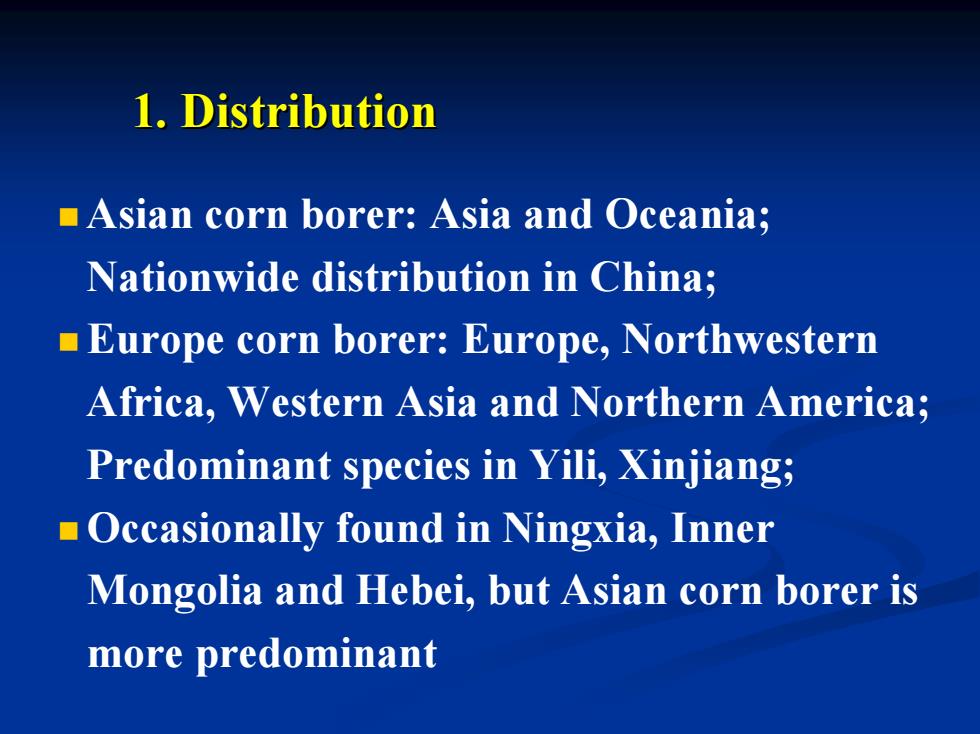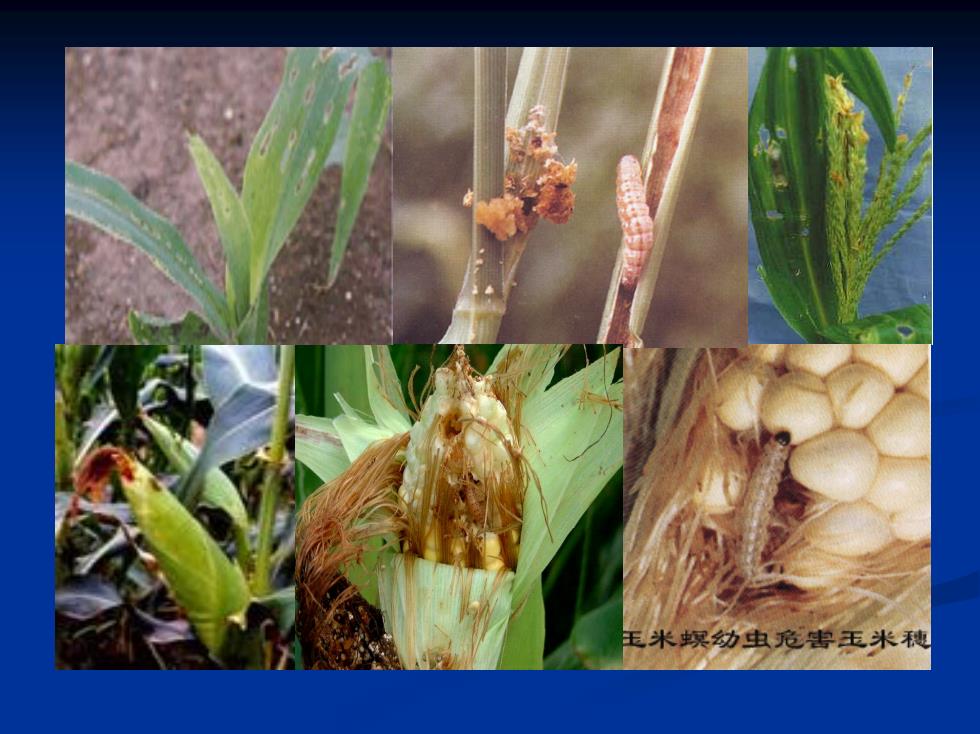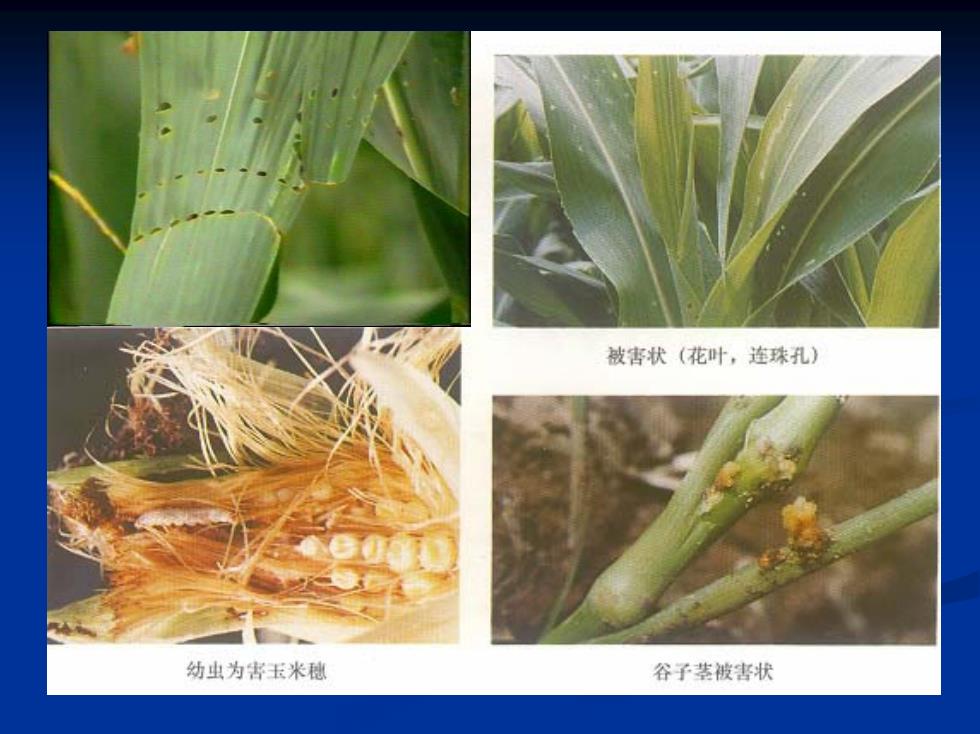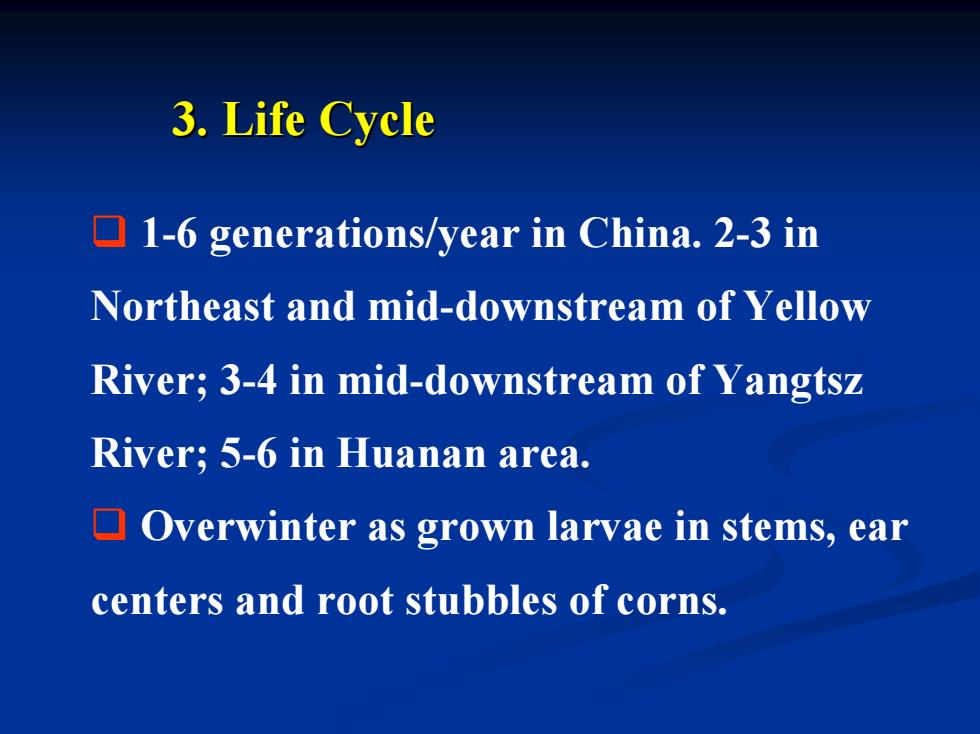
1.Distribution Asian corn borer:Asia and Oceania; Nationwide distribution in China; Europe corn borer:Europe,Northwestern Africa,Western Asia and Northern America; Predominant species in Yili,Xinjiang; Occasionally found in Ningxia,Inner Mongolia and Hebei,but Asian corn borer is more predominant
Asian corn borer: Asia and Oceania; Nationwide distribution in China; Europe corn borer: Europe, Northwestern Africa, Western Asia and Northern America; Predominant species in Yili, Xinjiang; Occasionally found in Ningxia, Inner Mongolia and Hebei, but Asian corn borer is more predominant 1. Distribution 1. Distribution

2.Damage *Polyphagous pests, more than 200 host plants recorded. *Mainly cause damage t through boring plants as larvae.During seedling stage of corn or sorghum,bore leaves to produce“花叶”, During seedling stage of millet,bore young leaves to produce“枯心”.After rice shooting and heading stages,larval damage influences nutrient transportation in plants,causing plants to produce non-rich grains.Also,larval damaged plants are easily pushed down by strong winds
Polyphagous pests, more than 200 host plants recorded. Mainly cause damage through boring plants as larvae. During seedling stage of corn or sorghum, bore leaves to produce “花叶”. During seedling stage of millet, bore young leaves to produce “枯心”. After rice shooting and heading stages, larval damage influences nutrient transportation in plants, causing plants to produce non-rich grains. Also, larval damaged plants are easily pushed down by strong winds. 2. Damage 2. Damage

王米螟幼虫危害玉米穗

被害状(花叶,连珠孔) 幼虫为害玉米穗 谷子茎被害状

3.Life Cycle 1-6 generations/year in China.2-3 in Northeast and mid-downstream of Yellow River;3-4 in mid-downstream of Yangtsz River;5-6 in Huanan area. Overwinter as grown larvae in stems,ear centers and root stubbles of corns
1-6 generations/year in China. 2-3 in Northeast and mid-downstream of Yellow River; 3-4 in mid-downstream of Yangtsz River; 5-6 in Huanan area. Overwinter as grown larvae in stems, ear centers and root stubbles of corns. 3. Life Cycle 3. Life Cycle